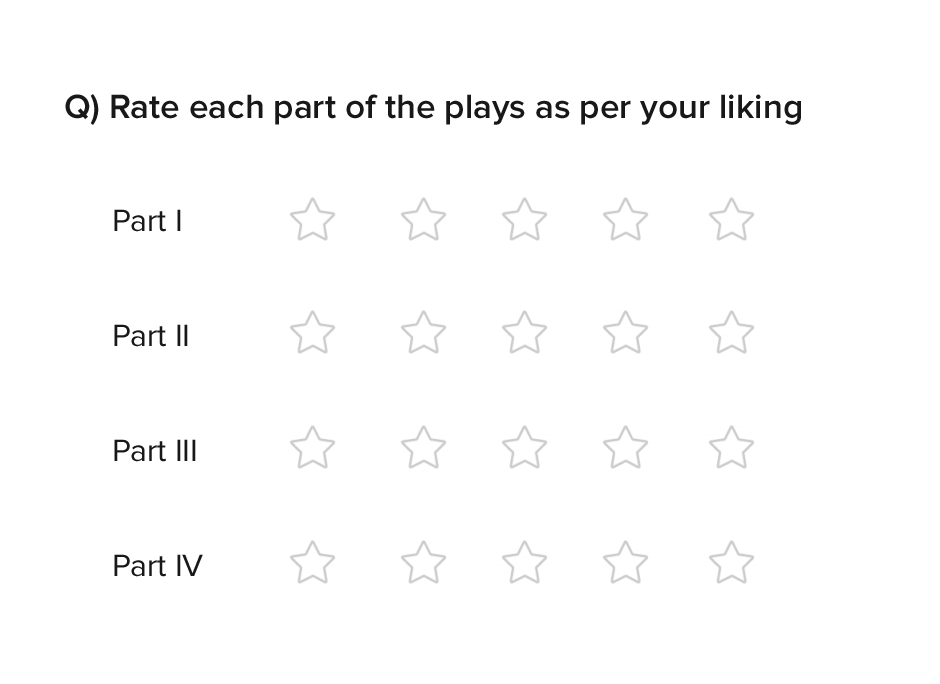Quantitative questions give you the numbers to prove the general point of your research. Qualitative questions, meanwhile, give you the details and depth to understand the full implications.
Let's take a deep dive into the characteristics of each type of research.
The difference between Quantitative and Qualitative research
Quantitative research
Quantitative research deals with numbers. Quantify, as we know, means to express or measure the quantity of.
Therefore, this type of research is used to "quantify" a problem by collecting numerical data or data that can be transformed into usable statistics to prove a point. It is mostly used to calculate an attitude, opinion, or other defined variable from a population.
Here are some questions would result in quantitative data:
How many times do you purchase tea from a shop?
If applicable, which café or coffee shop do you go to most often?
In such cases, the surveyor is looking for answers to questions like "What?" and "How many?", or in other words a numeric quantity.
The best question types for collecting quantitative data include multiple choice questions (radio button and checkbox), drop-down, Likert scale, slider scale, star ranking, and an NPS.
Remember:
Qualitative research mostly deals with amounts or numbers.
Here's another example to clear the cloud:
Let's assume you want to ascertain which parts people liked most about a stage play



Using a rating scale question is a good idea to get people's opinions in such a case.
Through the star matrix question, you can even discover the degree up to which people loved, or hated specific parts of the play. Thus you are fetching quantitative data here in a more innovative way- that makes it easier for respondents to answer.
Qualitative research
Qualitative research is a form of exploratory research. It seeks to explain the different perspectives of people—questions that usually constitute the "How?" and the "Why?" part of things are often classified as qualitative questions.
Qualitative research is mostly used when there is no fixed set of questions or a fixed number you want to assess, but rather when a discussion is more effective to explore the issue being researched.
It is also used to uncover trends in thought to help you dive deeper into a problem.
Qualitative data requires the respondent to mostly think over and answer. That is why open-ended question types that work well with it, since it gives the space to respondents to type out their thoughts. However, there is really no rule as such. Depending on what you are asking, you can opt for multiple choice questions (radio button/checkboxes), matrix questions or even rating scales.
Remember:
Qualitative research is not about numbers. Rather, it deals with the respondent's opinions and feelings—the questions are mostly directed at how respondents felt about the topic.
Examples of qualitative questions include:
Why is Starbucks your favourite coffee shop?
How do you feel Starbucks could improve?


When do you use Quantitative or Qualitative questions?

Now that you understand the difference between quantitative and qualitative questions, which method should you use in your survey research?
Unfortunately, there is no direct answer to that question! You need to employ a mix of both to reach the right conclusion.
For example:
Let us assume that you are conducting a survey to understand why some study places on a university campus are so popular. To identify which study places are actually crowded, you need to either ask the students where they are studying most of the time on campus or manually assess the places yourself over a period of time.
This data will help you pick out perhaps the top three locations out of all of the study areas. However, to get to the actual "Why?" part of the question, you need to go around asking students their own opinion. Only by doing this will you get an idea of why people prefer to study on the garden benches instead of in the library.
Specific uses for Qualitative and Quantitative data in surveys
Although the decision to use quantitative or qualitative questions is entirely based on the survey you are working on and the type of feedback you are looking to unearth, these are general instances where one is preferred over the other.
Validating data
Quantitative research gets you numbers that you can use to discover whether your idea or hypothesis about a question was correct or not. For instance, if I genuinely feel that people in an area prefer Pizza Hut over Domino's, I will have to send out a survey asking people their preference—only then can I discover if my hunch was right! So numbers in quantitative research are the sole thing that can help you establish a point.
Getting responses
It is quite easy to gather data while dealing with quantitative research because you are using multiple-choice questions that make it simple for the survey respondent to answer them without getting tired.
For example:
A question like "Have you watched the show?" has only two answers: Yes or No. This is easier than a question like "What do you feel could be improved about the show?" which is more open-ended. It needs some thinking and recollection on part of the respondent, and in turn, may lead to response fatigue.
So, as a surveyor, you need to identify where to use each. In cases where you want to prove a point and send out a quick survey, it is better to stick to quantitative questions, as those questions are a lot easier to answer. Avoid asking in-depth questions that need respondents to give a personalized answer unless you are specifically looking for that type of feedback through your survey.
Obtaining a human perspective
This is the key aspect where qualitative questions becomes unquestionably important. The opinions you collect using qualitative questions are the only way to understand what an actual person thinks about your project or hypothesis—this is often the ultimate winning feedback for a product/service. Getting an honest, unbiased opinion of what a customer feels about your product can uncover many hidden spots you did not even realize existed.
The key-balancing Qualitative and Quantitative research
Quantitative research sets the ball rolling as you identify new problems and opportunities. On the other hand, qualitative research gives you the human metrics—the why behind the measurement.
For example, say you have created a survey to collect feedback from the attendees of an organization-wide event. You need to fetch some important metrics to test the event's success: attendance rate, overall quality of speakers, value of information, and so on.
However there may also be some other questions you can also ask your attendees that can give you useful insights.
These may include:
What did you enjoy most about the event?
How can we improve your experience?
Is there any feedback that you would like to give?
Answers to these questions will help you gain an in-depth understanding of their experience so you can make changes while planning your next event.
Some survey templates—especially Zoho Survey's customer satisfaction surveys—include a good mixture of qualitative and quantitative questions.
For example:
Q) How long have you subscribed to our product?
Q) How likely are you to purchase any of our products again?
On top of the data collected in these two questions, one can add a follow-up question:
Do you have any other comments, questions, or concerns?
This can act as the extra-mile qualitative question in your survey.
So the conclusion is: A go-to method for a surveyor like you would be to employ quantitative questions to statistically look at what the whole picture is and use qualitative questions to add a human voice to the results.
You can get the best results from your survey by combining the two research methods—this approach gives you access to research insights that are extensive both in terms of numbers and depth of reasoning.
Now that you know the difference between these two research methods, you have a better idea of how to use them together. So go ahead and put them together in your next survey!

